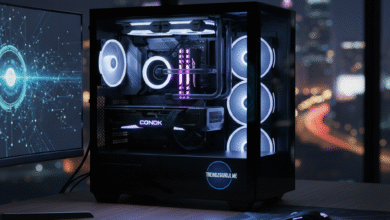The Importance of Regular Machinery Health Checks

In industrial settings, the health and reliability of machinery are critical to ensuring smooth operations, minimizing downtime, and preventing costly repairs. Regular machinery health checks play a fundamental role in maintaining operational efficiency and extending the lifespan of equipment. For businesses, establishing a routine maintenance schedule not only improves safety but also ensures that machinery operates at peak performance. In this article, we’ll explore the importance of regular machinery health checks and offer expert tips on how to get the most out of your maintenance routines.
1. Prioritize Preventative Maintenance
Preventative maintenance involves regular inspections and minor repairs before issues escalate. By catching potential problems early, you can avoid major malfunctions and extend the life of your machinery. A proactive approach reduces the risk of unplanned breakdowns, which can disrupt operations and lead to high repair costs. Scheduling regular inspections for parts that wear out over time, such as belts, bearings, and seals, is an excellent way to keep machinery running smoothly and minimize interruptions.
2. Create a Comprehensive Inspection Checklist
A well-defined inspection checklist is essential for ensuring that all aspects of machinery are routinely examined. An effective checklist should cover a range of key areas, including lubrication, alignment, and cleanliness. It’s important to inspect machinery both when it’s in use and during idle times, as different conditions may reveal various issues. Consider developing separate checklists for different types of equipment based on their unique requirements. This approach helps maintenance teams identify specific needs and address potential issues before they impact productivity.
3. Utilize IR Thermography for Early Problem Detection
One of the most effective tools in machinery maintenance is IR Thermography, a non-invasive technology that uses infrared cameras to detect temperature variations in equipment. By identifying “hot spots” within machinery components, IR thermography can highlight areas where friction, electrical issues, or mechanical wear may be present. These temperature abnormalities can indicate issues that could lead to breakdowns if not addressed. Using IR thermography as part of your health checks enables early detection of potential problems, reducing the risk of costly repairs and enhancing operational safety. This technology is especially valuable for monitoring hard-to-reach parts and components that may otherwise be difficult to assess.
4. Document Every Inspection and Repair
Accurate record-keeping is crucial to understanding the health history of each machine. By documenting every inspection, repair, and part replacement, maintenance teams can track recurring issues and anticipate future needs. This data also helps in identifying trends and patterns that might otherwise go unnoticed, enabling better decision-making and planning for future maintenance. Digital solutions, such as maintenance management software, can simplify this process, allowing easy access to historical data and generating reminders for upcoming inspections.
5. Train Operators and Technicians on Early Warning Signs
Your team plays a vital role in identifying potential issues before they escalate. By training operators and technicians to recognize early warning signs, such as unusual noises, vibrations, or fluctuations in performance, they can promptly report concerns for further investigation. Regular training sessions also ensure that team members stay updated on new equipment, tools, and diagnostic techniques. Empowering your team to take an active role in machinery health checks can lead to more timely interventions and reduce the chance of unexpected breakdowns.
6. Integrate Predictive Maintenance Technologies
Predictive maintenance technologies, such as sensors and real-time monitoring systems, are transforming how machinery health checks are performed. These technologies provide data on equipment performance, allowing maintenance teams to predict failures before they happen. Real-time monitoring systems track key metrics, including temperature, vibration, and pressure, enabling technicians to respond to deviations as they occur. Incorporating predictive maintenance into your routine health checks can improve machinery reliability, reduce maintenance costs, and enhance overall operational efficiency.
7. Schedule Regular Deep Cleanings and Lubrication
A clean machine is a productive machine. Dirt, debris, and dust buildup can cause machinery components to wear out prematurely. Regular deep cleaning is essential to maintaining machinery health, as it removes contaminants that can lead to corrosion, overheating, and other issues. Lubrication is equally important, as it reduces friction between moving parts, preventing excessive wear. Make sure to follow the manufacturer’s recommendations for lubrication schedules and use high-quality lubricants for the best results. By incorporating regular cleaning and lubrication into your health checks, you can ensure that machinery runs smoothly and reliably.
Conclusion
Regular machinery health checks are a fundamental aspect of maintaining equipment efficiency, ensuring worker safety, and reducing operational costs. By following the tips outlined above, including utilizing advanced tools like IR thermography and predictive maintenance technologies, businesses can prevent costly downtime and extend the life of their machinery. Prioritizing preventative maintenance, keeping thorough records, and training your team are all key steps toward a proactive approach that minimizes risk and enhances productivity. Machinery health checks may require time and resources, but the long-term benefits they provide are invaluable. Investing in routine maintenance is an investment in the stability, safety, and success of your operations.



